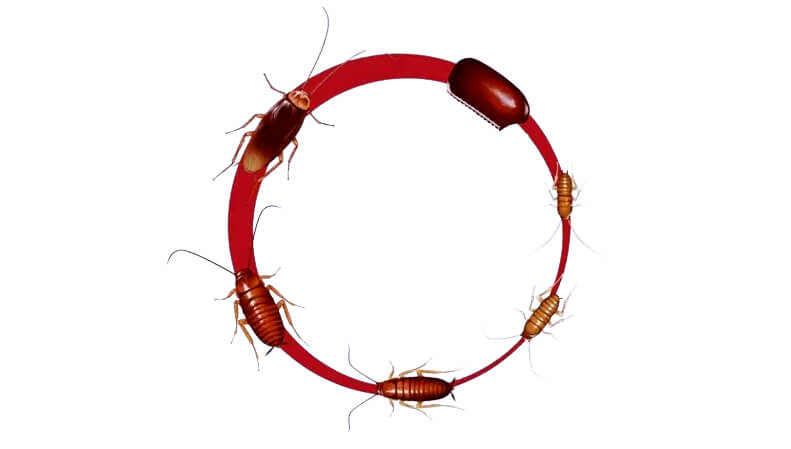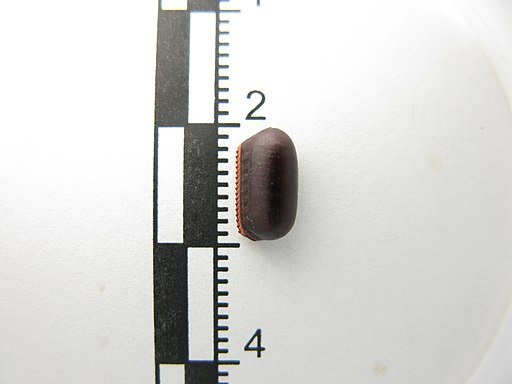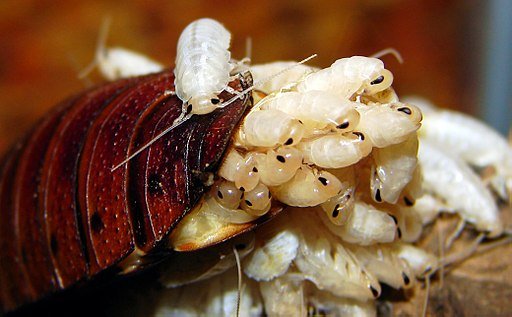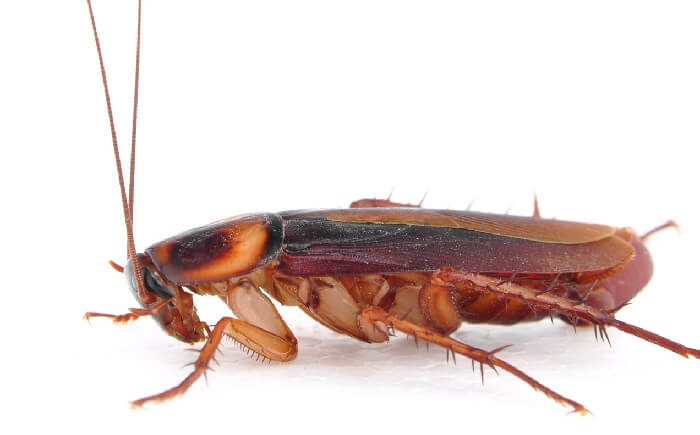Life Cycle of Cockroach with Pictures

Cockroaches, often perceived as mere pests, possess a fascinating and complex life cycle. Understanding this cycle is essential for those seeking to control or eradicate them. This article delves into the intricate world of cockroaches, from their initial stages as eggs to their mature, adult forms.
Reproduction & the Ootheca
 The journey of a cockroach begins long before we see them scuttling around our homes. Female cockroaches produce a protective casing known as an ootheca.
The journey of a cockroach begins long before we see them scuttling around our homes. Female cockroaches produce a protective casing known as an ootheca.
This is an ordinary eggshell and a specialized structure designed to protect the future generation. Depending on the species, there could be anywhere from 10 to 55 eggs inside this ootheca. The ability of cockroaches to produce so many eggs at once is one reason they can be difficult to control.
The environment in which the ootheca is placed plays a crucial role. Warmth, humidity, and security are key factors that influence the viability of the eggs. Thus, female cockroaches seek hidden, warm, and moist spaces to ensure the eggs have the best chance of survival. Depending on the species, it typically takes one to two months for the eggs to hatch.
The Nymph Phase

Emerging from the egg is the nymph – a juvenile form of the cockroach yet to reach maturity. This nymphal stage is characterized by multiple moltings, also known as instars.
The nymph sheds its exoskeleton during each molting, allowing it to grow larger. Freshly molted nymphs can appear startlingly white but will darken to a more familiar brown hue as their new exoskeleton hardens.
This nymph phase is not just about growth. It’s a period of survival. Nymph cockroaches, being smaller and more vulnerable, often need to be cautious of predators.
They also rely on ideal environmental conditions for sustenance and growth, further underscoring the importance of where female cockroaches lay their eggs.
Interestingly, maternal care varies across cockroach species. While some female cockroaches might be perceived as negligent, leaving their nymphs to fend for themselves, others exhibit more protective behaviors, ensuring the young remain safe throughout this vulnerable stage. Depending on the species and the conditions, the nymph phase might last anywhere from a few months to nearly a year.
The Mature Cockroach
 The culmination of the nymph’s journey is the adult phase. Once the nymph undergoes its final molt, a fully developed cockroach emerges with wings (in species that possess them).
The culmination of the nymph’s journey is the adult phase. Once the nymph undergoes its final molt, a fully developed cockroach emerges with wings (in species that possess them).
These adults are typically brown and can range in size from 1-1/2 to 3 inches. Key characteristics of the adult cockroach include three pairs of legs, two pairs of wings, and long antennae that are crucial for sensing their environment.
Though equipped with wings, most cockroaches do not engage in prolonged flights. Their strength lies in their agility on the ground. They can scuttle away from threats at impressive speeds, clocking up to two to three miles per hour.
In the adult stage, reproduction becomes a central focus. Females emit pheromones to attract potential mates. Once mated, the cycle begins anew, with females producing oothecae and seeking safe environments for their future offspring.
Asian Cockroach Life Cycle
The Asian cockroach undergoes egg, nymph, and adult stages. Females produce about four oothecae with an average of 37 eggs each. It takes nymphs roughly 67 days to mature. Adult females have a lifespan of 104 days, while males live about 49 days.
German Cockroach Life Cycle
German cockroaches experience three phases: egg, nymph, and adult. The complete life cycle is around 100 days, but it can vary based on conditions such as temperature and diet. Various environmental factors also influence their lifespan.
The Lifespan of American Cockroach
The American cockroach’s life cycle from egg to adult is approximately 600 days. Nymphs emerge 6-8 weeks post egg-laying and mature in 6-12 months. Adult cockroaches can live an extra 400 days, with females producing around 150 offspring in their lifetime.
Oriental Roach Life Cycle
Oriental cockroaches have an incubation period between 42 and 81 days. Once hatched, nymphs undergo seven molts over about a year to reach adulthood. Adult Blatta orientalis have a lifespan of 34 to 180 days, and mating occurs throughout the year.
Life Cycle of Brown Banded Cockroach
The brown-banded cockroach life cycle comprises eggs, 6-8 nymphal stages, and adults. An ootheca typically contains 18 eggs, but the average hatch rate is 13.2%. They progress through these phases to reach maturity and reproduce.
Conclusion
The life cycle of a cockroach is a testament to the resilience and adaptability of this creature. From the protective ootheca stage, through the vulnerable nymph phase, to the agile and reproductive adult stage, cockroaches have evolved strategies to survive and thrive in diverse environments.
Understanding their life cycle is fascinating from a biological perspective and crucial for effective pest control. By knowing how they grow and reproduce, we can better manage and control their populations, ensuring a cockroach-free environment.

James E. Butkovich, Pest control maven with a knack for eco-friendly & Chemical solutions. Blogger with a mission to make homes pest-free, one post at a time.